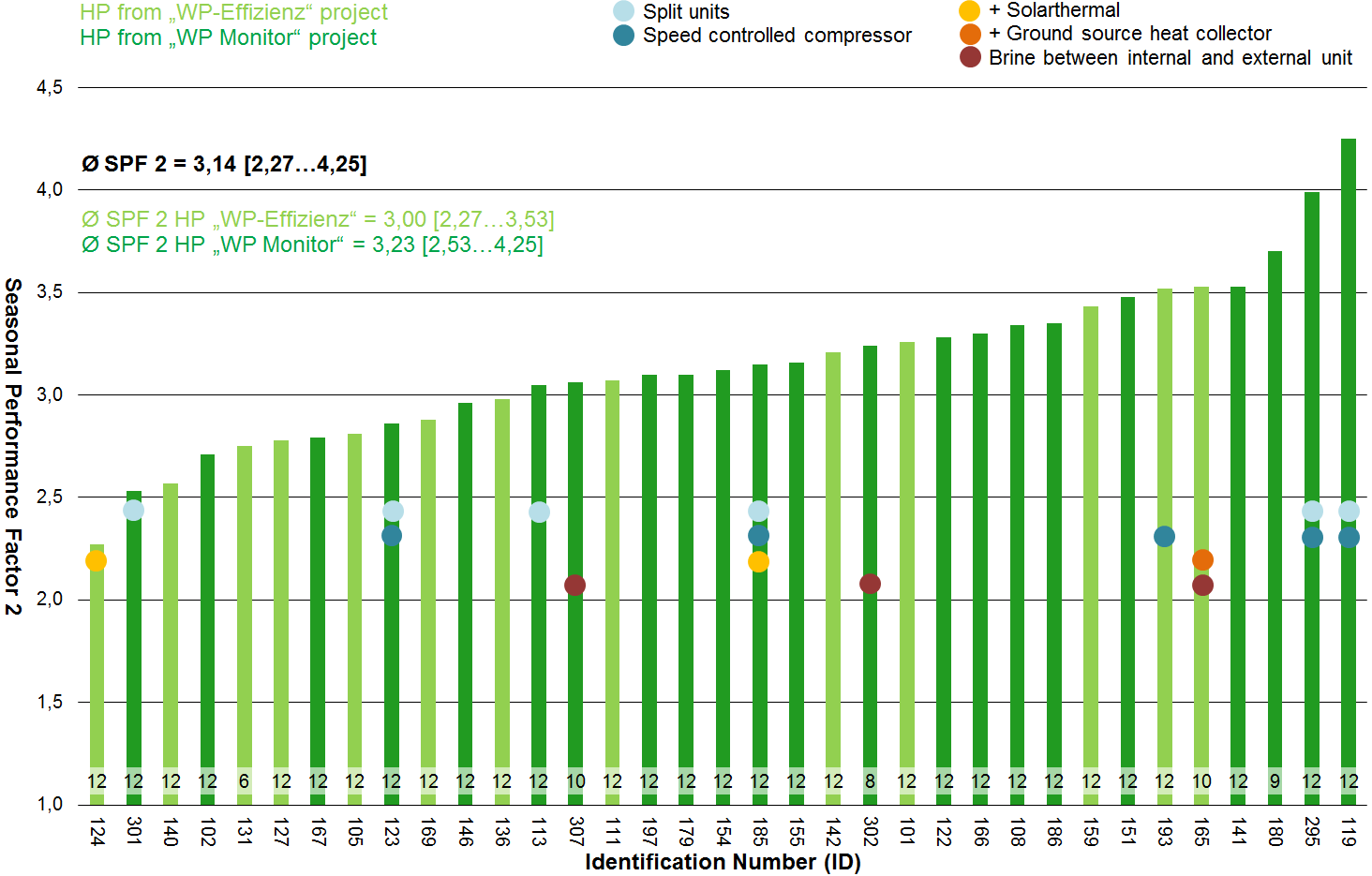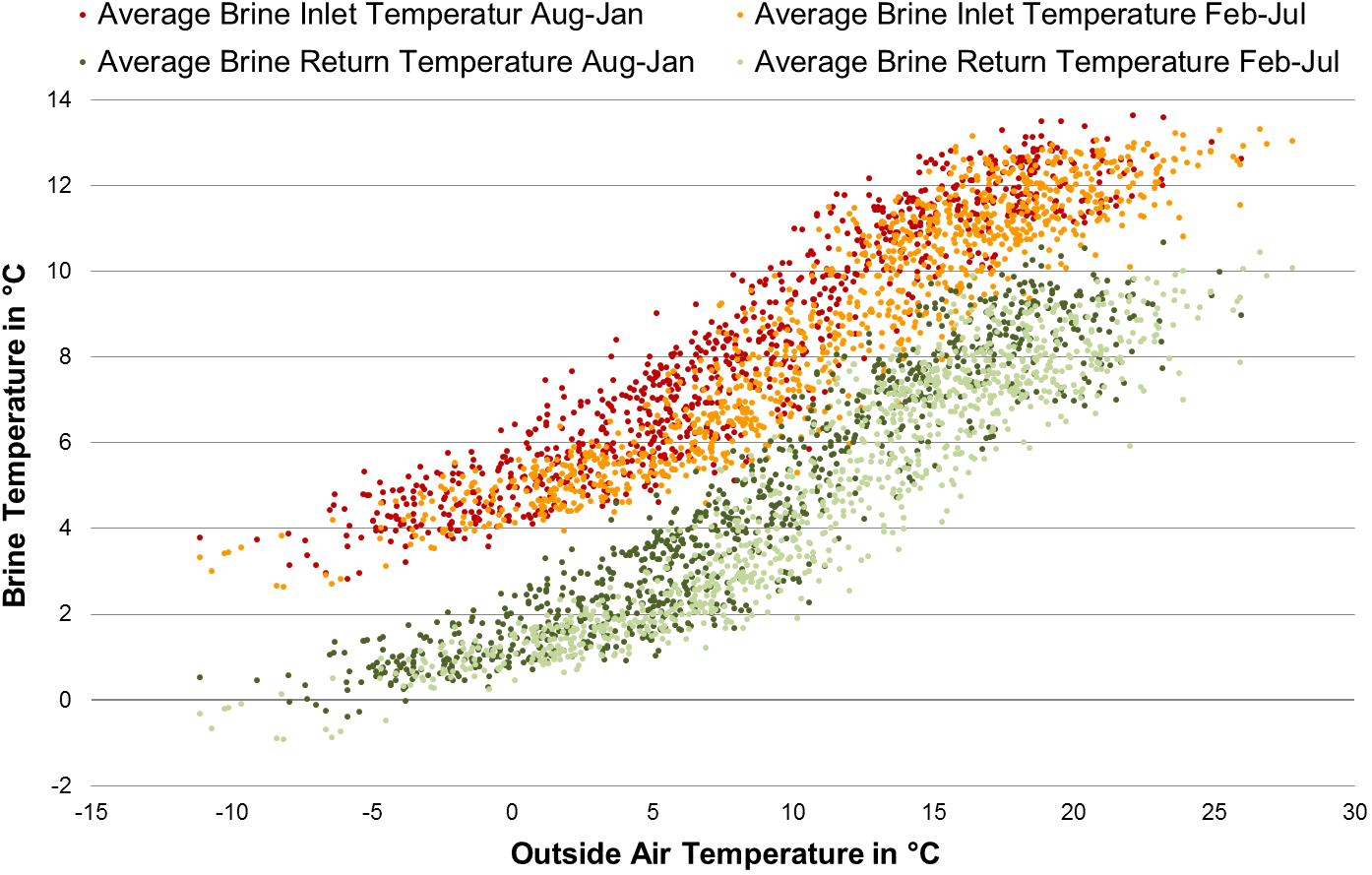| Duration: | December 2009 - September 2013 |
| Project Partners: | ait-deutschland GmbH, Bosch Thermotechnik GmbH, EnBW Energie Baden-Württemberg AG, Glen Dimplex Deutschland GmbH, Hautec GmbH, Heliotherm Wärmepumentechnik GmbH, Stiebel Eltron GmbH & Co. KG, Ochsner Wärmepumpen GmbH, Vaillant Deutschland GmbH & Co. KG, Viessmann Werke GmbH & Co. KG, Max Weishaupt GmbH, Wolf GmbH |
| Website: | www.wp-monitor.de |
Heat Pump Monitoring – Heat Pump Field Trial in New Single Familiy Houses (II)



In the project “WP Monitor,” the performance of 87 heat pump systems was measured and analyzed under real operation conditions. The study focused on heat pumps for space heating and domestic hot water in new or, in some rare cases, retrofitted buildings. Open questions from the previous project “WP-Efficiency” were addressed and new technologies such as direct evaporating systems, CO2 probes as well as heat pumps with speed-controlled compressors were evaluated. Technical and financial support for the project was contributed by eleven heat pump manufacturers and one electric utility. The detailed measurements allowed efficiencies to be determined and permitted a realistic description and analysis of the operating behavior to be made (e.g. system temperatures, auxiliary power demand, periods of operation and cycling).
From the 87 heat pumps investigated in the project, 50 were taken over from the “WP-Effizienz“ project and 37 were added through new registrations. Overall 54 % of the total heat pumps (35 % of those added) use the ground as heat source, 40 % (60 % of added) use the air and 6 % (5 % of added) use water. Underfloor radiant heating was the most common type of heat distribution system. In the final year of measurement, the average space heating demand in these buildings amounted to 78 kWh /m² for an average heated floor area of 188 m².
Since the data base grew only gradually in the beginning, the main evaluation took place for the period from July 2012 to June 2013. Within this period, air source heat pumps reached an average SPF of 3.1 (2.3 ... 4.3), with the old heat pumps achieving average values of 3.0 (2,3…3,5) and the new heat pumps of 3.2 (2.5 ... 4.3) respectively. Ground source heat pumps reached an average SPF of 4.0 (3.0…5.4) with average values of 3.9 (3.0…5.1) for the old heat pumps and 4.3 (3.5 ... 5.4) for the new heat pumps respectively.
For both the ground source heat pumps as well as the air source heat pumps, higher seasonal performance factors (SPF) than in the past were identified (“WP-Effizienz”). This is mostly due to the use of a new generation of heat pumps. The results show that the ecological and energetic advantage of heat pumps compared to fossil-fuel powered heating systems has further increased. It should be noted, however, that the wide range of efficiency values achieved under similar conditions suggests that a large potential for optimization still exists.